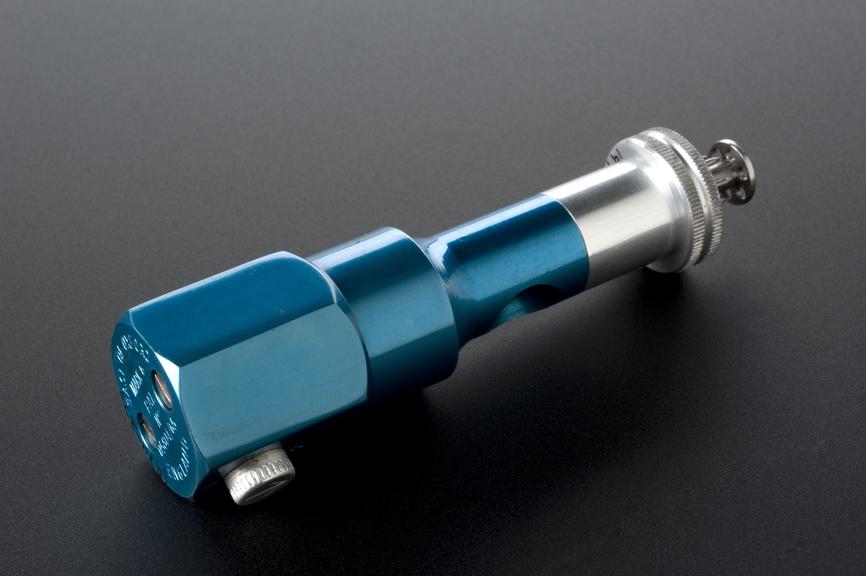Heaf test gun, Oxford, England, 1978
- Object Number:
- 1979-279/1
- :


East Mark 6 tuberculin test gun, aluminium, by East, Oxford, 1978
The Heaf Test shows if people have antibodies against tuberculosis. If they have not they may need a vaccination. Tuberculin liquid was placed on the skin, left to form a film and then six needles were plunged into the skin to a depth of 2 mm. If a red hard area appeared after three days, the test showed they had tuberculosis, were naturally immune or had acquired immunity in some way. If a person had no reaction, they were at risk of contracting the disease and vaccination was recommended. The gun would have been sterilised before being used on another patient.
The Heaf Test is named after the man who devised it in 1949, Frederick R G Heaf (1894-1973), who was an English physician. It was replaced in Britain by the Mantoux test.